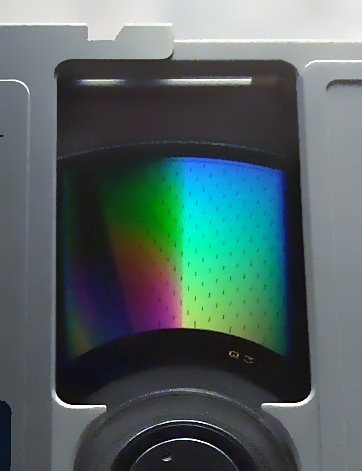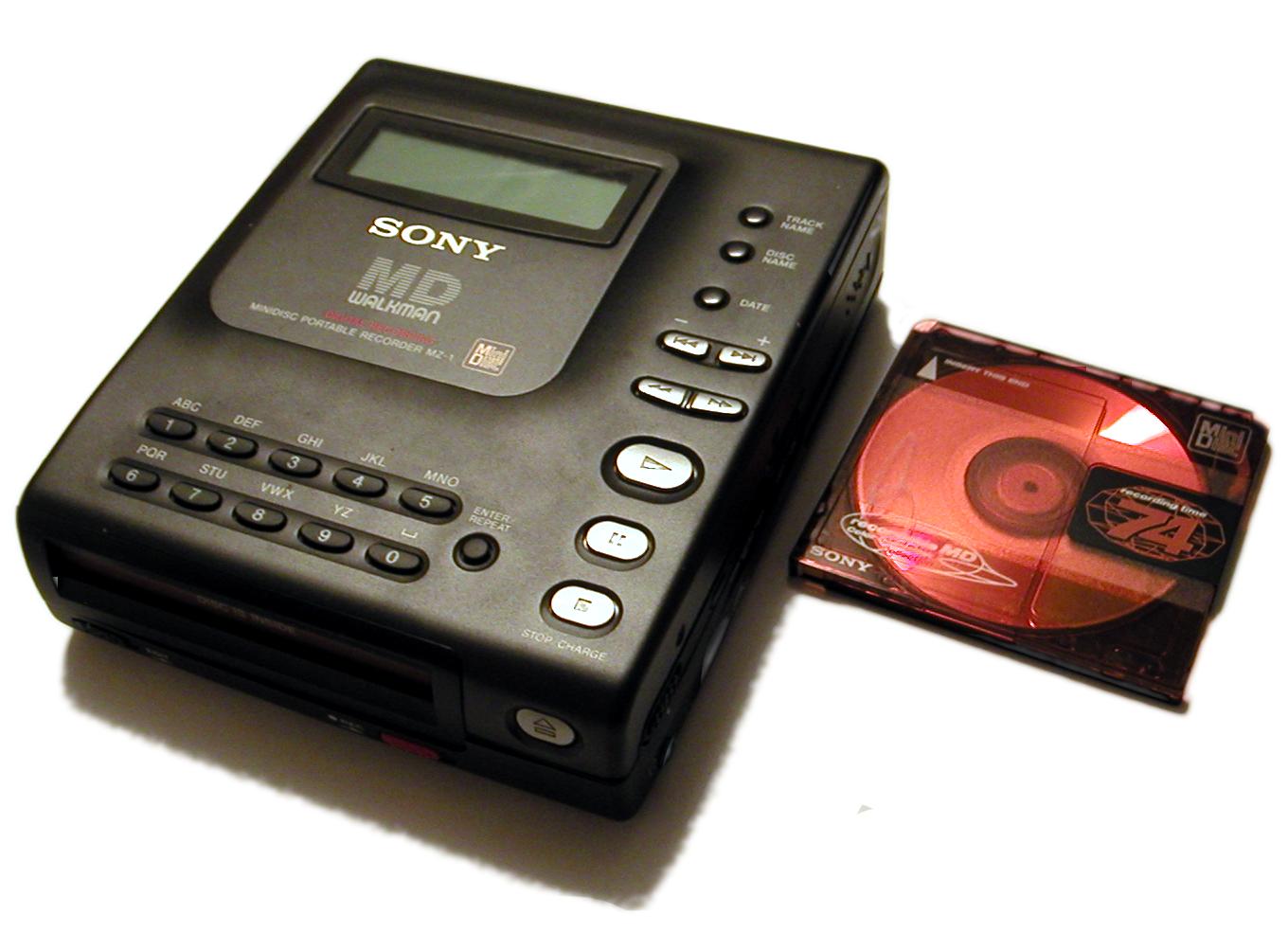|
Magneto-optical Disk
A magneto-optical drive is a kind of optical disc drive capable of writing and rewriting data upon a magneto-optical disc. Both 130 mm (5.25 in) and 90 mm (3.5 in) form factors exist. In 1983, just a year after the introduction of the Compact Disc, Kees Schouhamer Immink and Joseph Braat presented the first experiments with erasable magneto-optical Compact Discs during the 73rd AES Convention in Eindhoven. The technology was introduced commercially in 1985. Although optical, they normally appear as hard disk drives to an operating system and can be formatted with any file system. Magneto-optical drives were common in some countries, such as Japan, but have fallen into disuse. Overview Early drives are 130 mm and have the size of full-height 130 mm hard-drives (like in the IBM PC XT). 130 mm media looks similar to a CD-ROM enclosed in an old-style caddy, while 90 mm media is about the size of a regular 3-inch floppy disk, but twic ... [...More Info...] [...Related Items...] OR: [Wikipedia] [Google] [Baidu] |
Floptical
Floptical refers to a type of floppy disk drive that combines magnetic and optical technologies to store data on media similar to standard -inch floppy disks. The name is a portmanteau of the words "floppy" and "optical". It refers specifically to one brand of drive and disk system, but is also used more generically to refer to any system using similar techniques. The original Floptical technology was announced in 1988 and introduced late in 1991 by Insite Peripherals, a venture funded company set up by Jim Adkisson, one of the key engineers behind the original -inch floppy disk drive development at Shugart Associates in 1976. The main shareholders were Maxell, Iomega and 3M. Technical aspects The technology involves reading and writing data magnetically, while optically aligning the read/write head in the drive using grooves in the disk being sensed by an infrared LED and sensor (a form of visual servo). The magnetic head touches the recording surface, as it does in a norm ... [...More Info...] [...Related Items...] OR: [Wikipedia] [Google] [Baidu] |
MiniDiscs
MiniDisc (MD) is an erasable Magneto-optical drive, magneto-optical disc-based data storage device, data storage format offering a capacity of 60, 74, and later, 80 minutes of digitized sound, audio. Sony announced the MiniDisc in September 1992 and released it in November of that year for sale in Japan and in December in Europe, North America, and other countries. The music format was based on Adaptive Transform Acoustic Coding, ATRAC Audio compression (data), audio data compression, Sony's own proprietary compression code. Its successor, Hi-MD, would later introduce the option of linear PCM digital recording to meet audio quality comparable to that of a compact disc. MiniDiscs were very popular in Japan and found moderate success in Europe; although it was designed to be the successor of the cassette tape, it did not manage to mass replace it globally. By March 2011 Sony had sold 22 million MD players. Sony has ceased development of MD devices, with the last of the player ... [...More Info...] [...Related Items...] OR: [Wikipedia] [Google] [Baidu] |
Sony
, commonly stylized as SONY, is a Japanese multinational conglomerate corporation headquartered in Minato, Tokyo, Japan. As a major technology company, it operates as one of the world's largest manufacturers of consumer and professional electronic products, the largest video game console company and the largest video game publisher. Through Sony Entertainment Inc, it is one of the largest music companies (largest music publisher and second largest record label) and the third largest film studio, making it one of the most comprehensive media companies. It is the largest technology and media conglomerate in Japan. It is also recognized as the most cash-rich Japanese company, with net cash reserves of ¥2 trillion. Sony, with its 55 percent market share in the image sensor market, is the largest manufacturer of image sensors, the second largest camera manufacturer, and is among the semiconductor sales leaders. It is the world's largest player in the premium TV market for ... [...More Info...] [...Related Items...] OR: [Wikipedia] [Google] [Baidu] |
Canon (company)
is a Japanese multinational corporation headquartered in Ōta, Tokyo, Japan, specializing in optical, imaging, and industrial products, such as lenses, cameras, medical equipment, scanners, printers, and semiconductor manufacturing equipment.Corporate Profile " ''Canon''. Retrieved on 13 January 2009. Canon has a primary listing on the and is a constituent of the Core30 and index. It has a secondary ... [...More Info...] [...Related Items...] OR: [Wikipedia] [Google] [Baidu] |
NeXT
Next may refer to: Arts and entertainment Film * ''Next'' (1990 film), an animated short about William Shakespeare * ''Next'' (2007 film), a sci-fi film starring Nicolas Cage * '' Next: A Primer on Urban Painting'', a 2005 documentary film Literature * ''Next'' (Crichton novel), a novel by Michael Crichton * ''Next'' (Hynes novel), a 2010 novel by James Hynes * ''Next'' (play), a play by Terrence McNally * '' Next: The Future Just Happened'', a 2001 non-fiction book by Michael Lewis Music Performers * Next (American band), an R&B trio * NEXT (Korean band), a South Korean rock band * Next (Chinese group), a boy group Albums * ''Next'' (ATB album), 2017 * ''Next'' (Journey album) or the title song, 1977 * ''Next'' (The Necks album) or the title instrumental, 1990 * ''Next'' (The Sensational Alex Harvey Band album) or the title song (see below), 1973 * ''Next'' (Sevendust album), 2005 * ''Next'' (Soulive album), 2002 * ''Next'' (Vanessa Williams album), 1997 * ''Next!' ... [...More Info...] [...Related Items...] OR: [Wikipedia] [Google] [Baidu] |
MPEG-2
MPEG-2 (a.k.a. H.222/H.262 as was defined by the ITU) is a standard for "the generic video coding format, coding of moving pictures and associated audio information". It describes a combination of Lossy compression, lossy video compression and Lossy compression, lossy audio data compression methods, which permit storage and transmission of movies using currently available storage media and transmission bandwidth. While MPEG-2 is not as efficient as newer standards such as H.264/AVC and HEVC, H.265/HEVC, backwards compatibility with existing hardware and software means it is still widely used, for example in over-the-air digital television broadcasting and in the DVD-Video standard. Main characteristics MPEG-2 is widely used as the format of digital television signals that are broadcast by terrestrial television, terrestrial (over-the-air), Cable television, cable, and direct broadcast satellite Television, TV systems. It also specifies the format of movies and other programs th ... [...More Info...] [...Related Items...] OR: [Wikipedia] [Google] [Baidu] |
PC Magazine
''PC Magazine'' (shortened as ''PCMag'') is an American computer magazine published by Ziff Davis. A print edition was published from 1982 to January 2009. Publication of online editions started in late 1994 and have continued to the present day. Overview ''PC Magazine'' provides reviews and previews of the latest hardware and software for the information technology professional. Articles are written by leading experts including John C. Dvorak, whose regular column and "Inside Track" feature were among the magazine's most popular attractions. Other regular departments include columns by long-time editor-in-chief Michael J. Miller ("Forward Thinking"), Bill Machrone, and Jim Louderback, as well as: * "First Looks" (a collection of reviews of newly released products) * "Pipeline" (a collection of short articles and snippets on computer-industry developments) * "Solutions" (which includes various how-to articles) * "User-to-User" (a section in which the magazine's experts answ ... [...More Info...] [...Related Items...] OR: [Wikipedia] [Google] [Baidu] |
SCSI
Small Computer System Interface (SCSI, ) is a set of standards for physically connecting and transferring data between computers and peripheral devices. The SCSI standards define commands, protocols, electrical, optical and logical interfaces. The SCSI standard defines command sets for specific peripheral device types; the presence of "unknown" as one of these types means that in theory it can be used as an interface to almost any device, but the standard is highly pragmatic and addressed toward commercial requirements. The initial Parallel SCSI was most commonly used for hard disk drives and tape drives, but it can connect a wide range of other devices, including scanners and CD drives, although not all controllers can handle all devices. The ancestral SCSI standard, X3.131-1986, generally referred to as SCSI-1, was published by the X3T9 technical committee of the American National Standards Institute (ANSI) in 1986. SCSI-2 was published in August 1990 as X3.T9.2/86-109 ... [...More Info...] [...Related Items...] OR: [Wikipedia] [Google] [Baidu] |
Diskette
A floppy disk or floppy diskette (casually referred to as a floppy, or a diskette) is an obsolescent type of disk storage composed of a thin and flexible disk of a magnetic storage medium in a square or nearly square plastic enclosure lined with a fabric that removes dust particles from the spinning disk. Floppy disks store digital data which can be read and written when the disk is inserted into a floppy disk drive (FDD) connected to or inside a computer or other device. The first floppy disks, invented and made by IBM, had a disk diameter of . Subsequently, the 5¼-inch and then the 3½-inch became a ubiquitous form of data storage and transfer into the first years of the 21st century. 3½-inch floppy disks can still be used with an external USB floppy disk drive. USB drives for 5¼-inch, 8-inch, and other-size floppy disks are rare to non-existent. Some individuals and organizations continue to use older equipment to read or transfer data from floppy disks. Floppy disks ... [...More Info...] [...Related Items...] OR: [Wikipedia] [Google] [Baidu] |
Electromagnet
An electromagnet is a type of magnet in which the magnetic field is produced by an electric current. Electromagnets usually consist of wire wound into a coil. A current through the wire creates a magnetic field which is concentrated in the hole in the center of the coil. The magnetic field disappears when the current is turned off. The wire turns are often wound around a magnetic core made from a ferromagnetic or ferrimagnetic material such as iron; the magnetic core concentrates the magnetic flux and makes a more powerful magnet. The main advantage of an electromagnet over a permanent magnet is that the magnetic field can be quickly changed by controlling the amount of electric current in the winding. However, unlike a permanent magnet that needs no power, an electromagnet requires a continuous supply of current to maintain the magnetic field. Electromagnets are widely used as components of other electrical devices, such as motors, generators, electromechanical solen ... [...More Info...] [...Related Items...] OR: [Wikipedia] [Google] [Baidu] |







